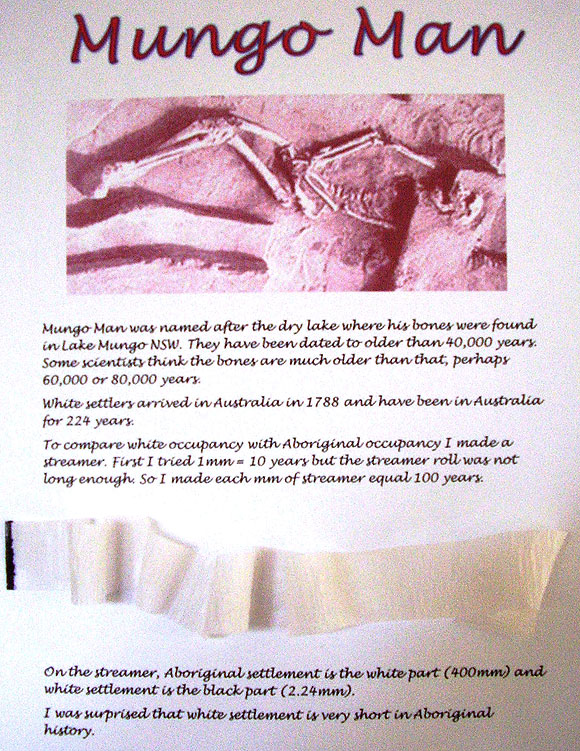Home > Reasoning > Assessment > Designing tasks for assessing reasoning > Ability to demonstrate reasoning > Mungo man poster
Mungo man poster
Year 8 students were asked to make a mathematical representation of Australian Aboriginal settlement. This student chose to make a timeline, using lengths on a streamer to show the time elapsed.
The text of the poster is included below.
Assessment of this student’s explanation could conclude that it demonstrated excellent reasoning about:
- how to calculate, compare and visually model the difference in times
- scale and proportion, even though these words were not used
- sensible conversion of metric units (e.g. mm, cm and m).
Mungo Man was named after the dry lake where his bones were found in Lake Mungo NSW. They have been dated to older than 40,000 years. Some scientists think the bones are much older than that, perhaps 60,000 or even 80,000 years.
White settlers arrived in Australia in 1788 and have been in Australia for 224 years.
To compare white occupancy with Aboriginal occupancy I made a streamer.
First I tried 1 mm = 10 years but the streamer roll was not long enough. So I made each mm of streamer equal 100 years.
On the streamer, Aboriginal settlement is the white part (400 mm) and white settlement is the black part (2.24 mm).
I was surprised that white settlement is very short in Aboriginal history.

